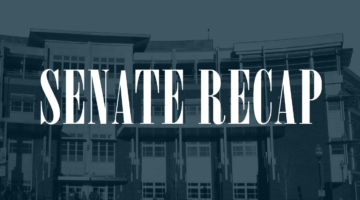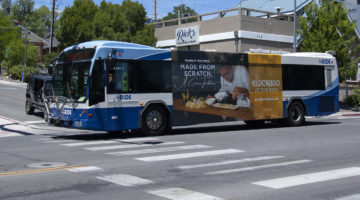Planning events designed to appeal to a campus of nearly 20,000 students is no simple feat.
However, this is the main duty of the ASUN programming board and like many organizations at the University of Nevada, Reno, there have been hits and misses. In recent years, the board has put on successful shows (Big Sean, Diplo and RL Grime), but the recent Timeflies concert suffered from a lack of planning and minimal advertising which showed by looking at the dismal number of students in attendance. Admittedly, programming has to cater to a diverse audience, but with a six-figure budget and the ability to engage the student population via social media, the board can and should make improvements.
Among all of ASUN’s branches, programming is arguably the most visible of any of the forums since the events and concerts that the students attend tie directly to a fee incorporated in their student payments. For this reason, the board should make a concerted effort to engage as many students as they can. Conversely, students need to participate as much as they can if they want to get the most out of their tuition fees paid to ASUN.
Several tactics that could possibly work to engage more students include creating a media panel and then employing a campus survey to find out what kind of music is the prevailing choice among undergraduates at the university.
The new media panel would expand off of the initial programming board and utilize members from Wolf Pack Radio and the music and fine arts departments. Moreover, a student-at-large candidate could help to evenly distribute the level of diversity found at the university. While it is true that the programmers are paid for their work, having a panel made up of students that are committed to the arts would allow the programmers to avoid groupthink by listening to the ideas of the other panelists.
After a board is created, an online voting system used through various social media platforms would give the events more mass appeal and allow the students the option for their voices to be heard. Also if the ability for students to vote on what kind of genre they want to see at the next concert becomes available in the future, the programmers and ASUN would only bolster their commitment to making the students’ collective voice be heard.
Beyond a media board, ASUN should consider establishing seasonal events that focus on specific genres. The event themes could remain static from year to year, only changing the musical act. This type of system would be more inclusive of students’ music tastes while also giving people events to look forward to throughout the year. By drawing different types of audiences, ASUN will also likely capture a demographic they do not currently have.
Although it should be noted that even if ASUN’s programming board is able to overcome the obstacles of its students’ varied music tastes, the responsibility then falls on the students to take advantage of a resource they themselves pay for. If the programming board were to implement strategies for online feedback and the students did not respond, then it becomes a moot point for the programming board to even make improvements.
Also, to mitigate the amount of time it would take to tally votes for the proposed forum, it should be limited to just the main concerts in the fall and spring. The programing board would then plan the remainder of the year’s events to maintain the independence and creativity of its staff.
At the end of the day, programming won’t be able to satisfy everyone’s needs, but if they take measures to engage more evenly, then the ball would be placed firmly in the hands of ASUN’s main consumer: the students.
The Nevada Sagebrush editorial staff can be reached at cboline@sagebrush.unr.edu and on Twitter @TheSagebrush.











